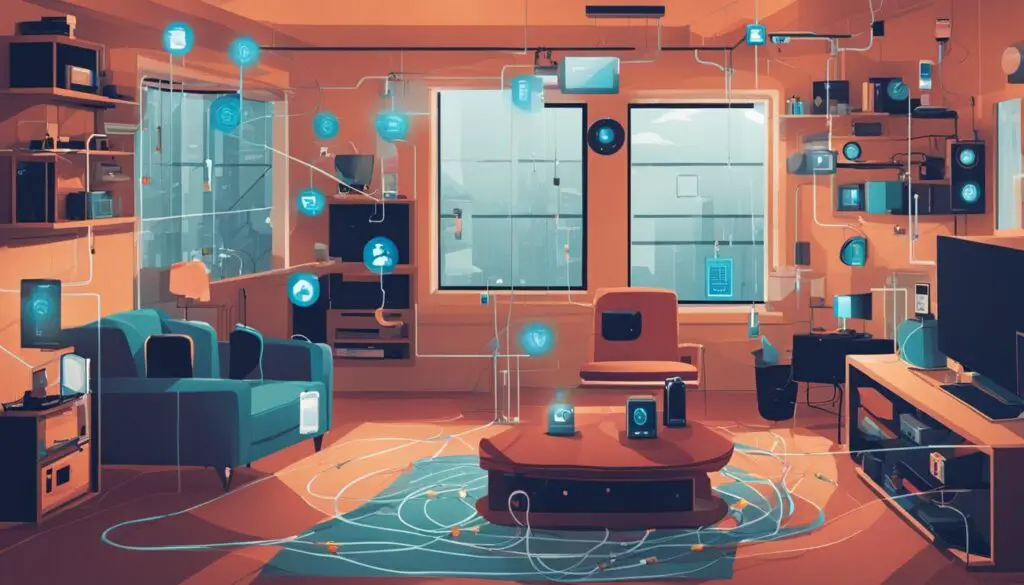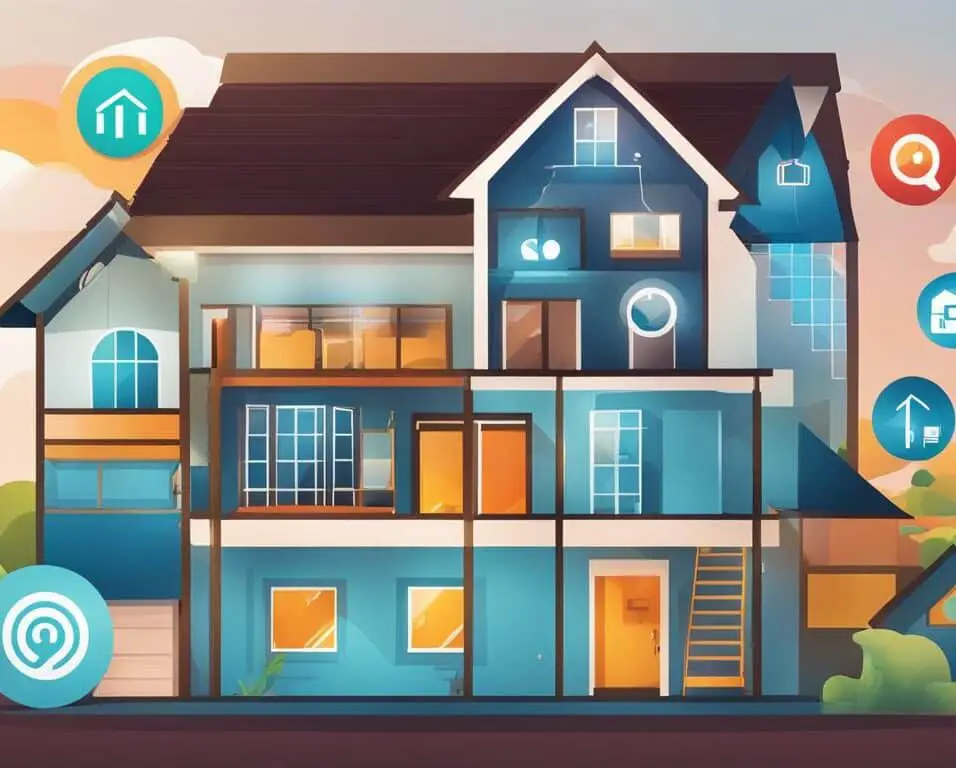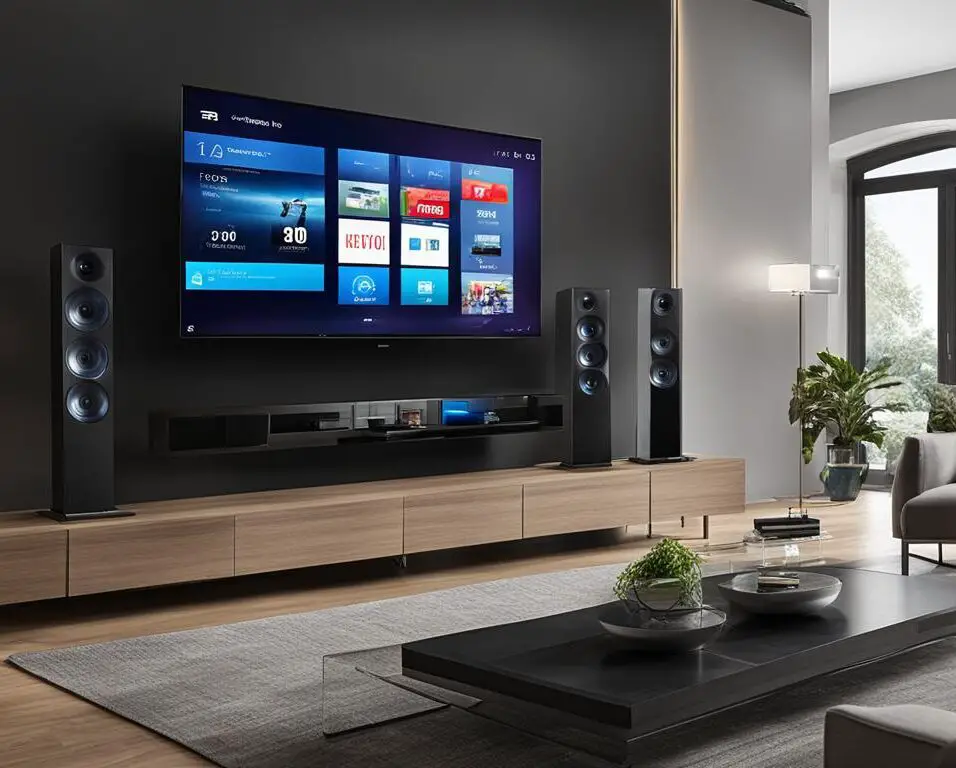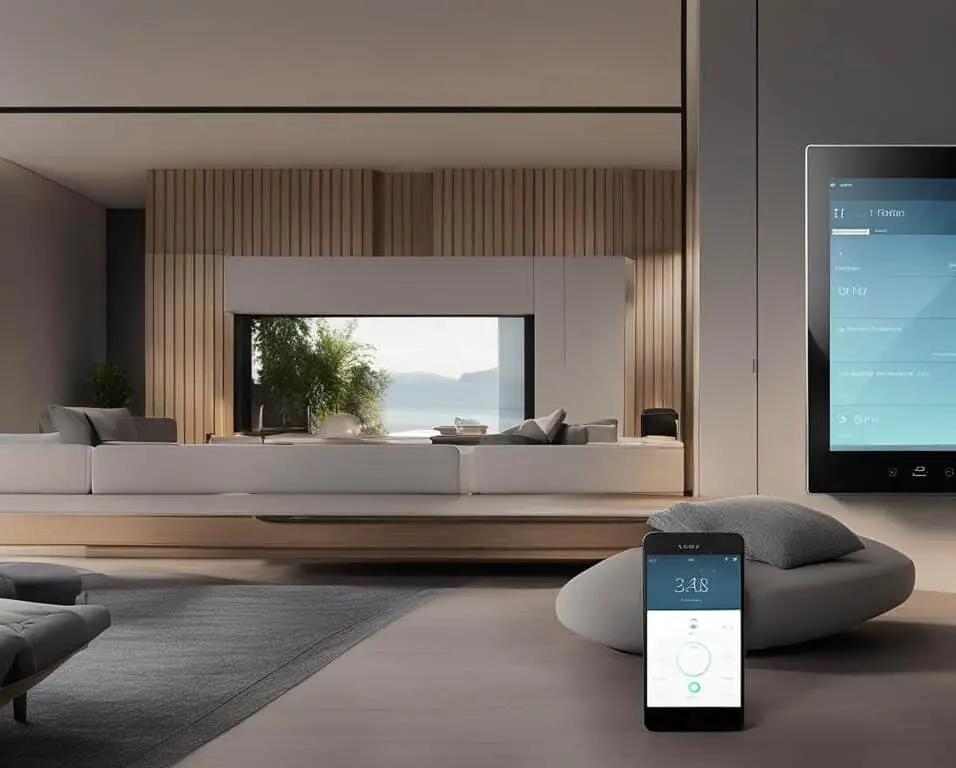Smart Home Networking: Challenges and Solutions
As technology continues to advance, more and more homeowners are turning to smart home upgrades for their affordability and convenience. However, these upgrades come with their fair share of challenges, particularly when it comes to smart home networking.
One common challenge is the compatibility of smart home devices. Different brands and protocols may not work together seamlessly, causing frustration for homeowners. Fortunately, there are solutions available to overcome this hurdle. Investing in a smart home hub or utilizing web services like Stringify or IFTTT can help integrate and control multiple devices from a single app, ensuring a smoother experience for users.
Another issue that often arises is network connectivity problems. Dropped feeds and malfunctions can disrupt the seamless operation of smart home devices. Upgrading to a better wireless router or setting up mesh networking can provide consistent internet connectivity and eliminate these disruptions.
Smart home devices that activate at the wrong times can also be a source of frustration. However, by utilizing features such as smart zones and human recognition, users can adjust the settings to ensure that devices operate according to their preferences.
Battery drain is another common issue that homeowners encounter with smart home devices. However, optimizing device settings and ensuring a strong Wi-Fi signal can minimize this problem.
In addition, it is important for smart devices to have easy-to-access physical controls or be paired with smart switches for added convenience.
Overall, while smart home networking can present its fair share of challenges, there are solutions available to overcome these obstacles. By investing in the right technology and following best practices, homeowners can enjoy a seamless and efficient home automation experience.
Key Takeaways:
- Invest in a smart home hub or utilize web services to integrate and control multiple devices from a single app.
- Upgrade to a better wireless router or set up mesh networking for consistent internet connectivity.
- Use features like smart zones and human recognition to adjust settings for devices that activate at the wrong times.
- Optimize device settings and ensure a strong Wi-Fi signal to minimize battery drain.
- Have easy-to-access physical controls or pair devices with smart switches for added convenience.
Overcoming Internet Connectivity and Power Source Drain Issues
When it comes to smart home technology, ensuring a stable internet connection and addressing power source drain are crucial for a seamless and efficient experience. In this section, we will explore some solutions to overcome these common challenges.
Internet Connectivity
Network security and troubleshooting play a vital role in maintaining a reliable connection for your smart home devices. One of the main causes of compatibility issues is the varied communication protocols and vendor standards used by different devices. While a new standard called Matter aims to simplify smart home systems, it is not yet widely adopted. As a result, investing in a smart home hub is often recommended to bridge the compatibility gap and ensure smooth communication between devices.
Another aspect to consider is your Wi-Fi connectivity. If you encounter frequent connection problems, there are several steps you can take to improve it. Start by checking your router settings, ensuring it is optimized for your smart home devices. If necessary, upgrading to a newer router with better range and performance can provide a significant improvement. For larger homes, mesh networking systems can be implemented to extend coverage and eliminate dead zones.
Power Source Drain
Smart home devices often rely on batteries or constant power supply, and optimizing their power usage is essential to avoid drain issues. To minimize power source drain, it is recommended to optimize the settings of your devices, such as adjusting the brightness or turning off unnecessary features. Additionally, regularly replacing batteries with fresh ones can help maintain a consistent power supply.
Furthermore, ensuring a strong Wi-Fi signal is crucial for efficient power usage. Weak signals can cause devices to consume more power as they struggle to maintain a stable connection. By positioning your devices closer to the router or using Wi-Fi range extenders, you can ensure a reliable signal that reduces power drain.
Table: Troubleshooting Internet Connectivity and Power Source Drain
| Issue | Solution |
|---|---|
| Compatibility issues | Invest in a smart home hub or bridge |
| Wi-Fi connectivity problems | Check router settings, upgrade to a newer router, or implement mesh networking |
| Power source drain | Optimize device settings, use fresh batteries, ensure a strong Wi-Fi signal |
By addressing internet connectivity and power source drain, you can significantly enhance the performance and reliability of your smart home devices. These solutions will lay the foundation for a smooth and seamless home automation experience.

Conclusion
Smart home integration has become an essential part of modern living, providing homeowners with convenience and efficiency. While there are challenges to overcome, such as compatibility issues, network troubleshooting, and security concerns, there are effective solutions available to ensure a seamless smart home experience.
Investing in a smart home hub is a recommended strategy as it allows for the integration and control of multiple devices from a single app. Upgrading wireless routers and utilizing mesh networking can address internet connectivity issues, while optimizing device settings and choosing devices that work with popular platforms can minimize power source drain and enhance overall performance.
Regular updates and adherence to manufacturer instructions are crucial in preventing automation failures, difficulties in setup and control, and security vulnerabilities. By implementing strong passwords, regularly updating software, and being cautious with data sharing, homeowners can mitigate potential risks and ensure the privacy of their smart home network.
With the continuous advancement of smart home technology, the future holds promise for even more seamless integration and troubleshooting. As technology improves, homeowners can look forward to a truly interconnected and efficient home, where smart devices work harmoniously to enhance their everyday lives.
FAQ
What are some common challenges with smart home networking?
Some common challenges include device compatibility issues, network connectivity problems, power source drain, automation failures, difficulty in setup and control, voice assistant problems, and security concerns.
How can I overcome compatibility issues between smart devices?
Investing in a smart home hub or using web services like Stringify or IFTTT can help integrate and control multiple devices from a single app. These solutions can bridge the gap between different brands and protocols.
What can I do to address internet connectivity issues?
You can try upgrading to a better wireless router or setting up mesh networking for consistent internet connectivity. Checking the router settings and optimizing device settings can also help improve Wi-Fi connectivity.
How can I minimize power source drain in smart home devices?
Optimizing device settings, using fresh batteries, and ensuring a strong Wi-Fi signal can help minimize battery drain. It’s also important to choose devices with easy-to-access physical controls or pair them with smart switches.
What can I do if my smart home devices are activating at the wrong times?
Smart zones and human recognition features can be used to adjust the activation settings of your devices. These features allow you to define specific areas or recognize human presence, ensuring that your devices activate when needed.
How can I prevent automation and routine failures?
Keeping your devices up-to-date, avoiding overly complex routines, and verifying synchronization can help prevent automation and routine failures. Regular updates and adherence to manufacturer instructions are key.
What should I do if I’m having trouble setting up and controlling my smart devices?
Choosing devices that work with popular smart home platforms and following manufacturer instructions can help alleviate difficulties in setup and control. It’s important to select devices that have good compatibility and offer clear instructions.
Why do voice assistants sometimes struggle to understand commands?
Voice assistants may have difficulty understanding commands due to background noise, accents, or ambiguous phrasing. However, continuous advancements in technology are improving their accuracy and ability to understand various speech patterns.
How can I address security and privacy concerns with smart home networking?
Implementing strong passwords, regularly updating software, and being cautious with data sharing can help mitigate security and privacy concerns. It’s important to prioritize network security and follow best practices for data protection.








